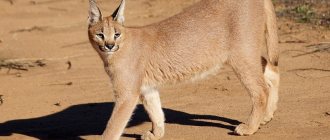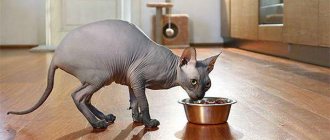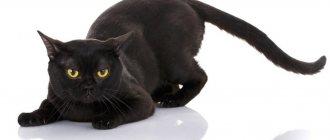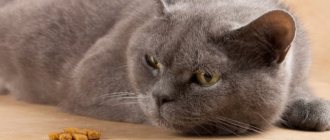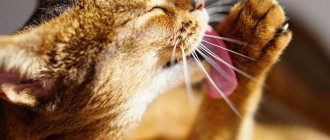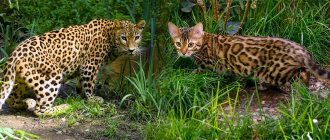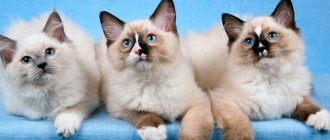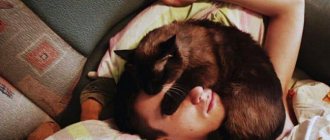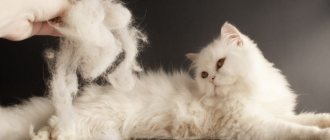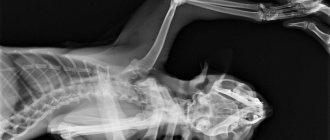The popularity of cats as pets has grown greatly in recent decades. This is due to a number of reasons, but the main one is the consolidation of cities and the growth of their population. Fewer and fewer people live in rural areas, but having moved to the city, people do not want to lose touch with nature and often get pets. And more often than not they turn out to be cats.
Why cats? The answer is simple: they are much cleaner than dogs and other domestic animals. In addition, they do not need to be walked several times a day, plus they are not so intrusive in behavior. A person who thinks about having a pet usually opts for a purebred animal. And for him, the question of how much a British kitten or another breed costs and what its price depends on comes first.
How many breeds are there?
There are not as many cat breeds as there are dog breeds, but there are still plenty to choose from. Even an avid cat lover cannot give the exact figure, because there are many associations and clubs in the world involved in the classification and exhibition of cat breeds. And their accepted breed standards may differ from each other, and if in one association a breed is considered recognized, then in another it will be only a branch of another.
On average, today there are over a hundred cat breeds, and together with the varieties there will be all seven hundred. Among them there are both large and small breeds, as well as with different colors and coats.
The British breed is recognized as one of the most popular in the world, and how much a kitten of the British species costs depends on a number of factors, which we will discuss below.
Sterilization and castration
In order not to deteriorate the breed, experts recommend spaying/castrating cats with minor or critical defects. Not everyone knows that sterilization and castration of animals are two different procedures, and cats are also castrated.
- Sterilization does not involve the removal of organs, but only limits their reproductive functions. It is considered more gentle and humane towards animals. However, after sterilization, the behavior of cats does not change. They still have a natural desire to mate, but are physically unable to produce offspring.
- Castration is carried out on both male and female cats. As a result of surgery, the testes (for males) and ovaries (for females) are removed. The production of sex hormones stops, reproductive function is absent.
Hidden dangers of surgical procedures exist, but such operations are always planned and have already become familiar to veterinarians.
Why choose the British?
Cats of this breed are distinguished by their attractive appearance; it may seem that they are always “smiling.” And kittens can even resemble teddy bears, and having often interacted with such a British kitten, how much it costs from the breeder no longer seems so important. But you should not be led by your emotions; the choice of a pet should be made soberly and with the future in mind.
The British are quite calm by nature, and often don’t even really know how to meow. This means that they are ideal for the conditions of a city apartment, where they feel great even without the need to be outside. The British are also known for their friendliness and playfulness, and they get along well with children.
Another advantage of this breed is that they have a weak hunting instinct, which means that even if they see a mouse, they do not chase it. In the living conditions of a private house, this is, of course, a minus for a cat, but in an apartment this makes it possible to combine the British even with small rodents and birds (not always, but in most cases).
Chinchilla
The British chinchilla cat is a species specially bred artificially. Its fur is similar to that of the rodent whose name it bears. This color is one of the most exotic and expensive. The British chinchilla has dense, short and thick fur with a well-developed undercoat.
Types of domestic rats - what colors are there?
The main color types are described below.
Silver
For this color, white wool is the basis. Each hair (not in the undercoat) has black tipping, i.e., an eighth of it is black. This is especially pronounced on the sides, tail and back. The coat looks covered with a dark coating. Always black paw pads, nose rim and eye contour.
Interesting! The silver chinchilla is the most common option among cats of this color.
British Shorthair Golden Chinchilla
This color is characterized by a bright apricot thick undercoat. The tipping of the main coat is black or blue. The color of the nose, eye rims and paw pads corresponds to the shade of the tips of the coat. There are no stripes, spots or any other inclusions. The coloring is uniform, darker on the sides, back and tail.
Silver shaded color
The fur is darker than silver. The tipping is painted on a third of the entire length. All other characteristics are the same, but dark fur is also visible between the tips of the fingers.
Interesting! In addition to the British, Scottish, Persian and Burmese cats also wear the chinchilla color.
British golden chinchilla
History of the breed
As is clear from the name of the breed itself, its homeland is Great Britain. Many breeds and other animals were bred in this country, but not all of them were honored to bear the name of the country itself. But the British were lucky in this.
The first records of the breed date back to 1880, but it was recognized as finally formed only in 1898. At the initial stage, Harrison Vere was involved in breeding the breed, and his name went down in history as the founder of this breed.
At that time, not many were interested in how much a British kitten cost, because they did not yet have such an attractive appearance as they do now. This was achieved by breeders after the Second World War, the original representatives of the breed were crossed with cats of other species (mainly European), and through selection the animal was bred in its modern version.
In general, the breed has over a hundred colors, both long and short hair are allowed. But there is still a gradation by class, which determines how much a British cat kitten costs.
What a pet needs: maintenance features
Having purchased an ordinary or fold-eared Briton, you should think: what does a pet need for a calm and comfortable life in the house? If you decide to buy a cat, it is important to ensure a decent existence for your pet:
- Prepare two bowls. One should be used for water and the other for food. By the way, it is best if the bowls for dry food and canned food were different.
- If the animal is from a specialized nursery, it is mainly trained to go to the tray. The breeder must tell you what kind of litter the kitten is used to using. At first, you need to show your baby where the tray is located. It is very important to keep the Briton clean, remembering to periodically replace the filler.
- To care for the fur of a handsome lop-eared cat, you should get a rubber oval brush with small, soft teeth.
- Take care of your scratching post. Mostly it looks like a column with a platform and a small house. This design can be compared to a playground that entertains and develops your pet, and at the same time helps sharpen its sharp claws.
- A place to sleep. Domestic cats need a safe and cozy place, especially since British kittens love to sleep. It’s time to buy a special house or sun lounger.
Division into classes
All over the world, the British are divided into three classes, these are:
- Pet class. This is the lowest class; it includes those representatives of the breed who have pronounced defects in body structure, color, etc. It is considered undesirable to use such cats for breeding - the likelihood of giving birth to kittens with even greater deviations from accepted standards is too high. But cats are quite suitable for the role of pets.
- Bridd class. This category includes only cats and does not include male cats. The reason for being assigned to this class is minor breed deviations that cannot in any way affect future offspring. Cats of this class are used in breeding.
- Show class. This includes those representatives who have no visible deficiencies. But it is worth noting that even kittens born from show-class parents can differ from each other in terms of their breed characteristics. Often the price of kittens of the same litter differs because of this, and how much a British Fold kitten costs depends on the breeder’s assessment of its eliteness.
Let us make a reservation that the assignment of a class occurs already in adulthood, and a show class can only be assigned by a specialist at an exhibition. And at an early age, pet-class kittens can only be rejected, and for the rest, the absence of breed defects is indicated in the documents.
All this should definitely be taken into account when buying a British kitten with documents; how much it will cost depends not only on the breed, but also on the region.
Tabby
Long-haired merle dachshund with blue eyes
The Tabby (Tabby) color allows cats to have patterns of different directions, sometimes the coat can even be ticked or marbled. The main signs of a Tabby are the letter M located on the animal’s forehead (scarab sign), dark stripes near the eyes and on the cheeks, and rings on the neck and chest.
Tiger (mackerel) tabby
The brindle (mackerel, striped) color option is considered the most common among tabbies. A line of the main coat color runs along the entire spine. From the name it is clear that the pattern is made up of dark stripes. A clear and separated pattern is a requirement made by specialists. If this rule is violated, the animal is rejected. The eyes are bright - red and copper.
Spotted Tabby
The British spotted tabby cat is distinguished from others by horizontal dark lines extending from the eyes. There are also stripes on the animal’s cheeks. A dark broken line runs along the spine, and on the sides there are a large number of dark spots and dots. The tip of the tail is dark, with striped rings running along its entire length.
Spotted tabby color
Marble tabby color
The British merle tabby color is considered classic. It is characterized by light silvery sides with dark spots or stripes. The pattern looks very impressive, since it is not interrupted or intersected anywhere. On the back of the head there is a pattern in the shape of a butterfly, and the letter M, standard for the color, is located lower than usual, closer to the nose. Eye color is copper with smoky rims. The British Marbled cat looks expensive and elegant.
Interesting! Small kittens may have an undivided merle color. When they reach the age of 2 months, the pattern becomes clear.
Thorby color (short for tabby and torty)
Torby (tobry) is a color that combines two color varieties: patterned and tortoiseshell tabby. A spotted, marbled or striped pattern arrangement is allowed. The standard assumes that the British tortoiseshell tabby color has rings on the neck, stripes on the legs, the letter M on the forehead, which is characteristic of all tabbies, and rings along the entire length of the tail. In kittens, identifying this type of pattern is problematic, but as they grow older, at about 12 months, the lines become clearer.
Abyssinian or ticked tabby
For many, this coloring of a cat looks like it is uniform, but it is not. The color is original, since the top part of the coat looks like a light dusting, and this shade is identical to the color of the lower part of the undercoat. Most often these colors are blue, black and chocolate, but others are also allowed.
Where to buy kittens?
We all have a natural desire to save money, and unscrupulous people often take advantage of this. Buying a purebred animal is no exception to the rule; today such deceptions are not uncommon.
A purebred kitten cannot be cheap; if you are offered a show-class kitten, then you should immediately suspect something is wrong. Either they openly want to deceive you, or you are faced with an inexperienced cat lover who doesn’t even know all the ins and outs about the breed. In this case, immediately refuse the purchase.
Do not take kittens only based on an advertisement on the Internet; they can sell you a British kitten without documents. How much such a kitten costs is not even worth finding out, because no one can guarantee that both parents are purebred and have no defects in their pedigree.
The best purchasing option would be to contact a specialized nursery, where they will not only sell you a purebred animal, but will also give you detailed advice on raising and feeding a kitten.
Where is the price higher?
If you ask how much a British kitten costs in Moscow or another metropolis, and compare the prices with the cost of kittens in the regions, you will be unpleasantly surprised. Pedigree animals in the capital will cost more than kittens from the regions.
The reason for this is clear - everything is more expensive in Moscow. But another question arises: is it worth buying kittens from the regions or paying more, but buying in the capital? And here not everything is clear.
In big cities, prices may be higher, but there is also more choice. In addition, you can find breeders who have been breeding this breed for more than one year and regularly participate in exhibitions. This means that you will be able to purchase not just a kitten from breeding parents, but also, possibly, champions of your breed. But you need to be prepared for the high cost of the animal.
In small regions there is another extreme - there are practically no professional breeders, and there is no need to talk about participation in exhibitions.
average cost
So, knowing where to buy a purebred animal, it will be easier to determine its origin based on the price. Simple kittens that do not have documents confirming their origin will cost 100-200 dollars (5,700–11,500 rubles). But keep in mind that no one guarantees their breed, even if the seller verbally assures you of this.
But you can understand how much a British chinchilla kitten from purebred parents costs even from an advertisement on the Internet. The average price is 400-500 dollars (23,000-30,000 rubles), but keep in mind that such kittens are usually sold without the right to breed. In other words, as they age, they are supposed to be spayed or neutered to prevent them from being used as breeders. But they are ideal for the role of a pet.
If you intend to take part in exhibitions and possible breeding in the future, then be prepared to pay $1,000 (more than 55,000 rubles) or more for a kitten. In this case, you will be provided with all the necessary documents indicating the breed of the kitten, and a good breeder will always help with advice in the future.
The cost of kittens is indicated on the market average; depending on the demand in a particular region, it differs both up and down. There is often a waiting list for kittens from champion parents, so keep this in mind if you want to buy a future champion.
Care
British Shorthairs are very clean cats; caring for their fur is minimal and consists of weekly brushing, and daily during shedding. In addition to regular brushing, you should inspect your pet's ears for crusts, scratches and excess wax formation, and if necessary, consult a veterinarian. The tips of the claws need to be trimmed once every 1-2 weeks. It is also necessary to regularly carry out anti-parasitic treatments and undergo annual vaccinations from a veterinarian. Typically, the British love to eat, but since they are prone to gaining excess weight, it is necessary to monitor the balance, quality and quantity of the diet offered. It is better to opt for premium and super premium food. In general, British Shorthairs have good health, and their life expectancy can reach 20 years.
